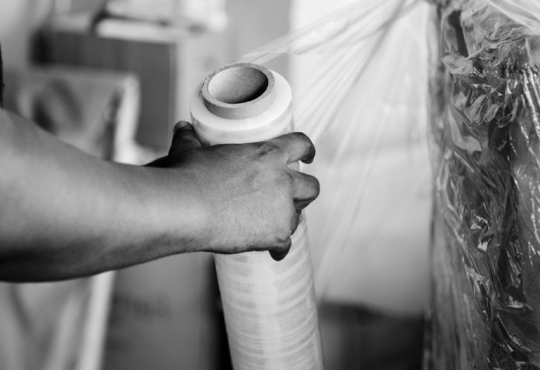
Introduction
When you hear “home inspection,” images of flashlights and clipboards often come to mind. Yet many hazards remain invisible without proper tools and training. A Certified Full Spectrum Inspector goes far beyond checking shingles and faucets by examining every element that affects safety, durability and indoor health. From radon measurement to roofline stability, this article details the critical areas these experts assess to ensure total property confidence.
The Invisible Threat: Radon and Other Environmental Hazards
Radon gas, colorless, odorless and tasteless, ranks second only to smoking as a cause of lung cancer. It can seep into basements through foundation cracks or soil gas infiltration. Full spectrum inspectors:
- Deploy Continuous Radon Monitors in the lowest occupied spaces for several days to weeks, capturing accurate long‑term averages
- Compare Findings to EPA Guidelines, determining whether mitigation systems are required
- Recommend Sub‑slab Depressurization or enhanced ventilation to lower readings if thresholds are exceeded
Additionally, inspectors test for asbestos in old insulation or floor tiles and lead‑based paint in homes built before 1978. Identifying these hazards prevents long-term health risks and legal liability.
Ensuring Clean, Healthy Air: Mold, VOCs and Ventilation
Indoor air quality testing reveals airborne threats far beyond dust. Inspectors sample for:
- Mold Spores: Air and surface samples are sent to labs to quantify mold concentrations and species
- Volatile Organic Compounds: Direct‑reading monitors and grab samples assess off‑gassing from paints, adhesives and cleaning products
- Carbon Dioxide Levels: Elevated CO₂ indicates poor ventilation, which can exacerbate pollutant buildup
This comprehensive IAQ approach helps uncover dampness, leaks and HVAC inefficiencies that lead to mold growth and stagnant air.
Infrared Thermal Imaging: Uncovering Hidden Issues
Thermal cameras have revolutionized structural inspections by revealing:
- Moisture Intrusion behind walls, ceilings and under floors without cutting into finishes
- Insulation Deficits that drive energy loss and moisture condensation
- Electrical Hot Spots in panels, outlets and wiring that risk fire hazards
Certified professionals interpret thermal patterns to pinpoint problem areas requiring further probing or immediate action.
Structural Integrity and Roofline Evaluation
A home’s roofline, framing and envelope bear the brunt of weather and age. Inspectors examine:
- Shingle Condition for curling, granule loss and proper flashing
- Gutter and Downspout Function to ensure water is diverted away from foundations
- Attic Ventilation and insulation depth to prevent moisture buildup and ice dams
- Foundation Walls for cracks, efflorescence or signs of soil pressure
Combining visual checks with thermal imaging provides a complete picture of structural health.
Comprehensive Mechanical and Water System Checks
Mechanical systems and water supplies are critical to daily comfort and safety. Evaluations include:
- HVAC Performance: Filter condition, duct leakage tests and thermostat calibration
- Well Pump and Pressure Tank Testing to verify reliable water delivery
- Water Quality Analysis for coliform bacteria, heavy metals and sediment in both well and municipal sources
Inspectors ensure mechanical systems function efficiently and that water is safe to use.
Sewer Scope and Septic System Inspections
Blocked or leaky sewer lines can cause foundation damage and health hazards. Full spectrum inspections feature:
- Camera‑Equipped Sewer Scopes run through main drains to spot cracks, root intrusion and blockages
- Septic Dye Tests to confirm proper tank and drain field operation
Early detection of sewer issues prevents backups, costly excavations and environmental contamination.
Inspecting Ancillary Structures: Chimneys, Outbuildings and Marine Features
Outbuildings and specialized structures often get overlooked:
- Chimney Camera Scans check for creosote buildup, cracks or unsafe mortar
- Barns, Sheds and Garages receive structural and moisture inspections similar to the main house
- Docks, Seawalls and Boat Lifts on waterfront properties are examined for corrosion, wood decay and anchoring
By including these in a single full spectrum building inspection, inspectors guarantee no part of the property is neglected.
The Value of Holistic Reporting
After hundreds of data points are collected, inspectors compile a detailed report that features:
- Annotated infrared images and thermal maps
- Laboratory results for air and water samples
- Video excerpts from sewer scope and chimney scans
- Prioritized recommendations with estimated costs and timelines
Clients gain a clear roadmap for immediate safety fixes and longer‑term maintenance.
Conclusion
A Certified Full Spectrum Inspector brings unmatched depth to property assessments. From radon and IAQ testing to roofline exams and sewer scopes, they chart every hidden risk that standard inspections miss. Choosing this level of expertise means moving forward with complete peace of mind, because if it wasn’t full spectrum inspected, it wasn’t fully inspected.







